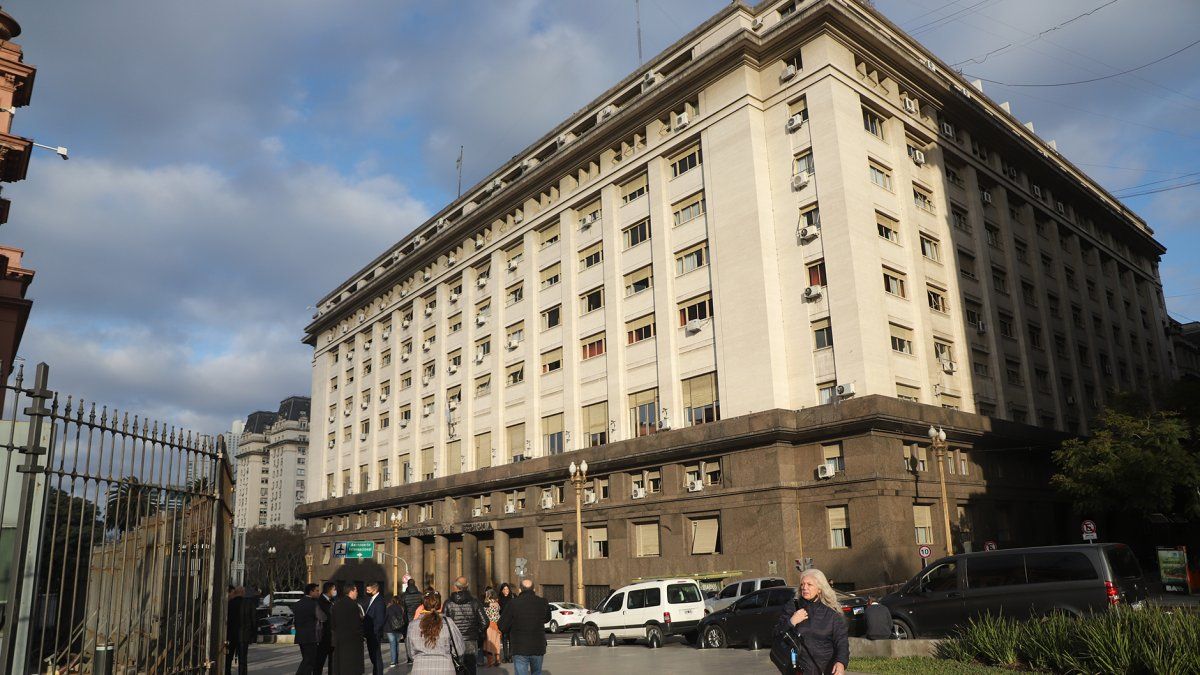In the same sense, the consultant Analytics stressed that the real reduction in spending in the August-October quarter exceeded one trillion pesos (exactly one trillion and 43 billion), in a turn that “began with (the former Minister of Economy, Silvina) batakis and deepened with (the current, Sergio) Massa”, the president of the entity, said in statements to Télam, Ricardo Delgado.
“It is a process of fiscal consolidation, with greater monetary regulation, rate hikes and greater control over issuancewhich has to do with compliance with the agreement with the International Monetary Fundwhich was the first thing Massa raised,” he added.
In this sense, Delgado recalled that “the first thing Massa said was that he was going to comply with the target of 2.5% primary deficit and that’s the way.”
The reasons for the phenomenon are diverse and, in this sense, the vice president of the Argentine Association of Budget and Public Financial Administration (ASAP), Guido Rangugni, stressed that there isa willingness to contain spending“and that” in fact there are explicit statements by the minister in this sense, with a performance that is in line with what is stated, as a policy objective that is to contain spending.
The assessments of Delgado and Rangugni coincide with those expressed in a timely manner by the Secretary of the Treasury, Raul Rigowho stressed that “when the current minister Massa took office, he gave a series of guidelines that would characterize it and one of them was the tax order“, to complete noting that “When one orders tax, you have to do things that can be read as an adjustment, but we don’t think they are.“.
Rangugni pointed out in statements to Télam that the acceleration of the inflation “it’s not that significant, but it contributes” to the improvement of the fiscal front through what economists call “liquefaction” of nominal spending to grow less than prices, but he placed the accent on issues of a budgetary administration nature, which come from the end of last year.
“As there was no Budget approved by law but rather an extension of that of 2021, that amount allowed it to be handled more freely in the first half of the year, but later the resources became scarce and although there was an extension (through DNU 331 of 16 June), it did not occur in all the games with the same ease”, clarified
He also indicated that “they saw declines in real terms in some social spending and there was a deceleration on the side of the energy subsidies“, one of the issues that the economist also remarked to Télam Nicolás Pertierra, from the Scalabrini Ortiz Center for Economic and Social Studies (CESO)who highlighted the drop in transfers to Cammesa (Administrator Company of the Wholesale Electricity Market).
“There are some unknowns about whether this can be sustained – Pertierra stated -, because in July, August, September, months in which sharply reduced transfers to Cammesatariff subsidies had not yet been cut”, from which it can be deduced that the improvement could be due to a payment schedule issue.
Something similar was evaluated by Delgado in his weekly analysis of November, in which in the first week the expenses in economic subsidies had a real year-on-year rise of 55.8%but because “in November 2021 the bulk of the payments were made in the fourth week of the month.”
In this sense, Rangugni asked to pay attention to the evolution of spending in what remains to end the yearin view of what usually occurs in the distribution of the budgetary quotas that the Ministry of Finance assigns to each of the jurisdictions: “due to the execution and authorization procedure, each ministry is assigned quarterly quotas that generally They are smaller in the first three and looser in the last one, in which they are released a little more,” he said.
Though not all expenses have the same flexibility and among the most rigid are the remuneration of personnel and retirement and pensions, contrary to what happens with Goods and Services, with a fall of the order of 20% in real termsas well as capital spending, which with a nominal increase of 47.1% In the first nine months of the year, it was 10.6% below inflation.
Pertierra warned that “the basis of comparison for 2021 is high spending”as usually happens in odd years, in which Argentina holds its general elections, and pointed out in this regard that “from July-August 2021 until the middle of this year, spending had been growing very strongly.”
After this evolution, “there was less fiscal space and less chance of financing the deficit. Obviously, the actual reduction in spending also responds to that,” she estimated.
Source: Ambito
David William is a talented author who has made a name for himself in the world of writing. He is a professional author who writes on a wide range of topics, from general interest to opinion news. David is currently working as a writer at 24 hours worlds where he brings his unique perspective and in-depth research to his articles, making them both informative and engaging.




